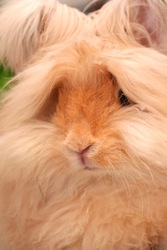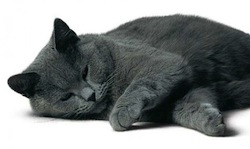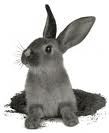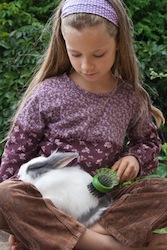How to avoid the inconveniences associated with molting in our animals ?
 Twice per year, our pets (dogs, cats, rabbits, ferrets) will experience a period of molting. Although quite natural, This fall of hair can have harmful consequences for our companions, especially for those such as rabbits or cats that carry special attention at their toilet and can absorb a large amount of hair on this occasion.
Twice per year, our pets (dogs, cats, rabbits, ferrets) will experience a period of molting. Although quite natural, This fall of hair can have harmful consequences for our companions, especially for those such as rabbits or cats that carry special attention at their toilet and can absorb a large amount of hair on this occasion.
MOLT : A NATURAL PHENOMENON
In the spring and fall, our pets will make makeover to prepare for better withstand future climate changes.
Outgoing animals face little or not at all less temperature variations than those frequently outdoors. So, they can lose their hair on a more regular basis throughout the year outside the 'traditional' periods of moulting.
ANY RELATED INCONVENIENCE HAS ABSORPTION OF HAIR
 When a significant amount of hair is absorbed by licking, She can come to locate in the digestive tract of an animal and to behave as a foreign body.
When a significant amount of hair is absorbed by licking, She can come to locate in the digestive tract of an animal and to behave as a foreign body.
This phenomenon occurs mainly:
– In animals with a very marked grooming behavior :
Pay particular attention to their toilet rabbits or cats can absorb many hairs licking.
– Among the parasitized animals (presence of gale, chips, cheyletiellose…) that snapped up hair scratching and swallowing a large amount.
These hairballs are sometimes relatively well tolerated, at least at the beginning of evolution (especially when they are present in the stomach) but without the rapid establishment of a treatment, the symptoms may escalate up to resemble those of a real occlusion:
 – Among the rodents (Rabbit, Chinchilla, Guinea pig, Hamster…), These "hairballs" will cause the transit problems : one gastric stasis (slowing of the digestive transit and accumulation of food in the stomach) will be following their absorption.
– Among the rodents (Rabbit, Chinchilla, Guinea pig, Hamster…), These "hairballs" will cause the transit problems : one gastric stasis (slowing of the digestive transit and accumulation of food in the stomach) will be following their absorption.
These digestive disorders will be still accented in rodents who drink little and receive a poor diet in cellulose and fresh greenery: the transit is slowed down further still and dehydrate the hairball in stomach giving birth to very compact clusters called phytobezoars.
The animal then makes small droppings very hard and dry or more boogers at all; He became less bright and loses gradually the appetite.
– In cats, problems associated with the presence of the phytobezoars are those of a chronic gastritis (chronic inflammation of the stomach): the animal eats less well, vomit regularly…( hairs can be found in his vomit or the stool)
BRUSHING : AN EFFECTIVE PREVENTION
Maintenance of the hair goes through a brushing or a regular combing of your pet.
If medium or long haired animals should be regularly brushed, those short-haired ask them also some attention.
Indeed, brushing helps of course to preserve a beautiful dress but that is not all.
Beyond the purely aesthetic aspect, regular brushing allows :
– The elimination of dead hair and dirt that settle in the coat
– To avoid the formation of wads and not only unsightly knots but which can also hurt the animal (These nodes are on the skin)
– To verify the absence of parasites in your pet's coat (chips, ticks, chiggers…)
– To limit significantly the absorption of hairs and formation of the phytobezoars and their disadvantages
The ideal is to get used very quickly your companion to be brushed. This grooming can then become a real moment of complicity.
Glove, Chard or weeder ?
 Hardware side, animal haired short, You can use a glove or a weeder rubber. Among those long or semi-long haired, you choose a card (It's a very soft bristle brush). A comb (fine or spaced teeth) will complement the wide range.
Hardware side, animal haired short, You can use a glove or a weeder rubber. Among those long or semi-long haired, you choose a card (It's a very soft bristle brush). A comb (fine or spaced teeth) will complement the wide range.
The rhythm of the brushing of course will depend on the nature of the hair : monthly for the short (rhythm accentuated moulting), He moved to once a week on average for the MI-long and twice for long. It will become daily or even place during molts.
The easiest is to put your pet on a table to make it to your height. Start with the back of the animal, brushing in the direction of the hair and then back. Then pass the comb. Don't forget the panties and the back of the ears.
It happens that, lack of maintenance, hair must be shorn. This is the case when the nodes are practically 'glued' to the skin. In this case, only a cut flush to remove these large wads of hair.
Attention, in this case, do not use scissors : the wads are often present in areas where the skin is very thin and you could cut your pet!
DISTURBANCES : DON'T HESITATE TO CONSULT
Various measures can be introduced to combat the presence of hairballs when they have not yet impact on the general State of the animal :
– An increase in transit is, in this case, sought to eliminate them through natural channels:
* lubrication of the digestive wall,
* increase in transit using medication,
* increase the amount of fibre in the diet with leeks, Zucchini, Endive…
These curative measures quickly implemented will reduce the risk of evolution towards Occlusive disorders and surgery may be necessary to treat.
Do not hesitate to seek advice from your veterinarian when any vomiting hair or when hairs are found in the feces of your pet. It will be able to tell you a treatment to be implemented to try to eliminate these hairs natural waterway
(It should be noted that the specific Anatomy of rabbits does not allow them to vomit and vomiting of hair may not be sign of presence of phytobezoars home. Any changes to the transit of your rabbit should alert you to the possible presence of hairballs in the gut (harder droppings, drier than usual or issued in very small quantities…))
§
Certain measures can reduce the risk of occlusion related to the absorption of our hair by animals during their molting periods as :
– One brushing twice-daily animal hairs to minimize ingestion of hair
– The regular distribution of an specialty veterinarian helping to migration of these furry animals who vomit regularly (paraffin gel oil, eserine…)
